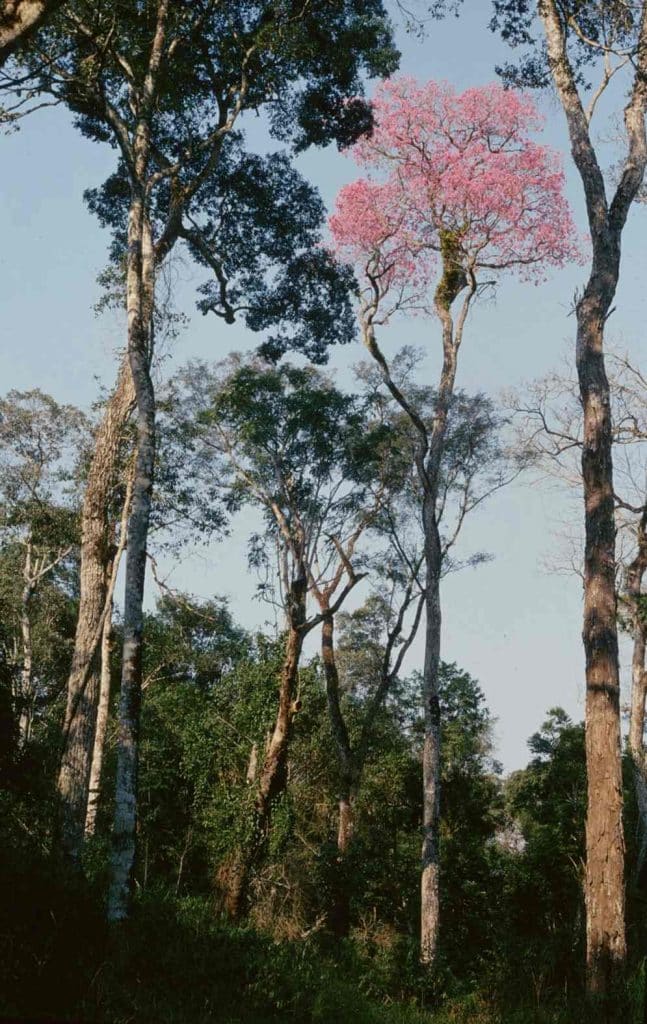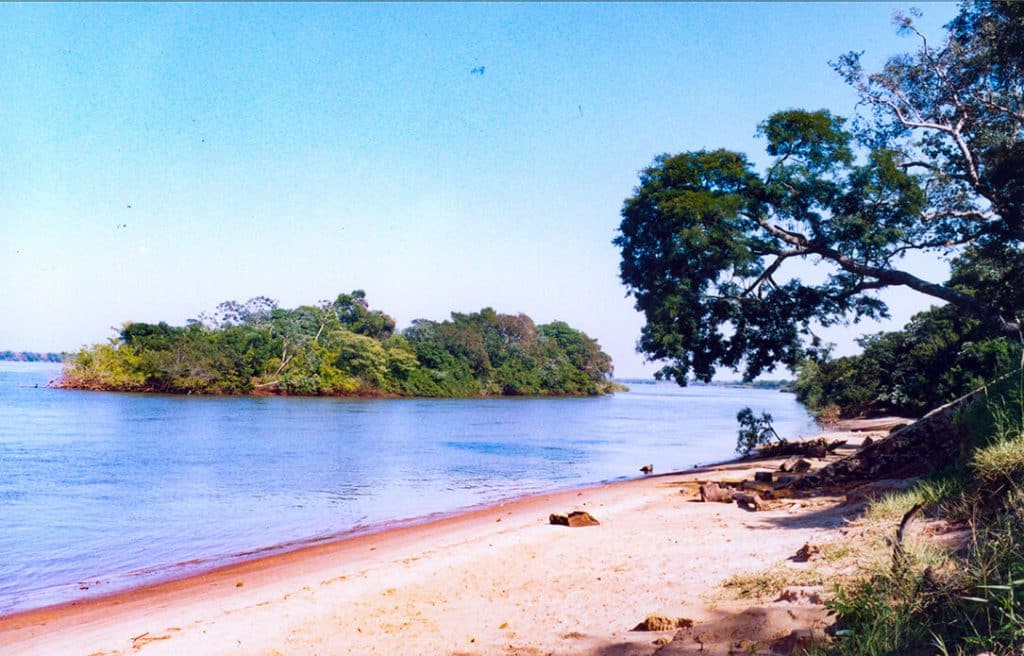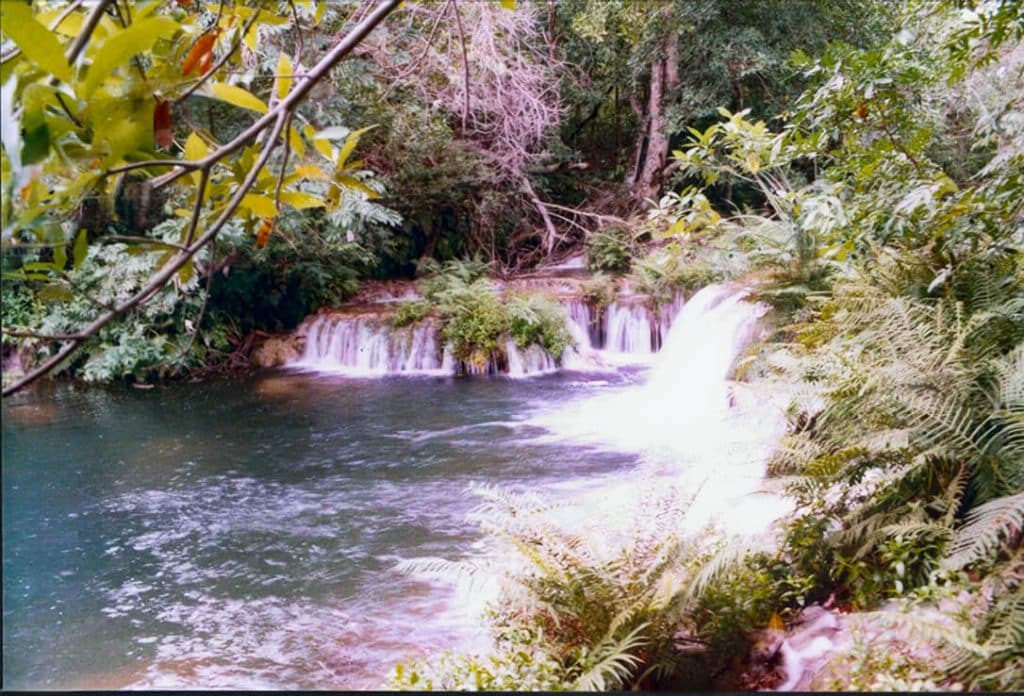Private Conservation Initiatives
Paraguay is a country with very important bioregions, ecosystems and species of fauna and flora, many of which are found on private properties. This is why the Foundation develops strategies to work collaboratively with owners who wish to conserve portions of their properties and/or generate productive processes that tend towards sustainability through studies that allow us to better understand the biodiversity of their properties.
The Foundation promotes the implementation of private conservation models that can be replicated in the country, recognizing that many of the important areas to conserve are in the hands of private owners, that there is little public land and that most governments in the region They lack funds to purchase or adequately protect these areas.
In this way, private land conservation instruments constitute a complement to state nature protection systems, and can be established at a lower cost, with greater monitoring capacity.
These systems are voluntary and depend on the conviction of landowners to participate in these initiatives and social recognition.
Background
In 1989, the Moisés Bertoni Foundation created a program that promoted the formation of a nature protection system from the private sector, as part of the innovative strategies to support the Paraguayan State for the in situ conservation of biodiversity.
The area of Protected Wild Areas in Paraguay in that year covered only 2,79% of the country's total. Starting in 1994, with the creation of the National System of Protected Wild Areas (SINASIP), which includes the category of conservation under private domain, the aim was to increase the number and representativeness of protected areas, until reaching at least 10% of the total area of the national territory.
In this way, the aim is to protect a sample of the biodiversity present in the country in its different biological regions of the national territory.



Creation of Private Protected Areas
Preserving and protecting the country's natural and cultural heritage is everyone's responsibility. Although an important part of this function is the responsibility of the State, there is much that the private sector and civil society organizations can and should do in order to guarantee the protection of national assets.
In 1992, the National System of Protected Wild Areas (SINASIP) was established, which allows private properties that contain relevant natural elements to be registered and recognized under a conservation category.
The Moisés Bertoni Foundation collaborates with landowners who are interested in including part of their properties as natural reserves under private ownership recognized by the Paraguayan State, in the development of the justification, declaration and management process of said areas.
To present a technical justification, it is necessary to have scientific information about the natural resources present, for which it is necessary that a multidisciplinary team of professionals, specialists in fauna, flora and ecosystems, prepare said report with the appropriate technical criteria.
The Foundation has a team of highly specialized and highly experienced professionals, as well as the assistance of allied organizations, such as the Environmental Conservation Network on Private Lands, through which it offers services to landowners interested in participating in the conservation of the country.
Background
In 1989, the Moisés Bertoni Foundation created a program that promoted the formation of a nature protection system from the private sector, as part of the innovative strategies to support the Paraguayan State for the in situ conservation of biodiversity.
The area of Protected Wild Areas in Paraguay in that year covered only 2,79% of the country's total. Starting in 1994, with the creation of the National System of Protected Wild Areas (SINASIP), which includes the category of conservation under private domain, the aim was to increase the number and representativeness of protected areas, until reaching at least 10% of the total area of the national territory.
In this way, the aim is to protect a sample of the biodiversity present in the country in its different biological regions of the national territory.
Development of Management Plans for protected wild areas
Protected areas require technical and strategic instruments to develop activities. The Foundation has a group of professionals with extensive experience in the development of Management Plans and has a great capacity to convene other professionals to develop these technical instruments in order to collaborate with the conservation of natural ecosystems.
During these thirty years of institutional life, the Foundation has developed and participated in twenty-four (24) Management Plans for State Protected Wild Areas, of Independent and Private Entities, between 1996 and 2021, either as a participant, member of the organizing team and member of Core Team.
Protected area administration
The Foundation has worked with its technicians to support environmental adaptation processes and conservation actions with different companies nationwide, to mention the most important:
- Implementation of Annual Operational Plans of the Natural Reserves owned by Sociedad Agrícola Golondrina SA and Forestal Iguazú RSL between the period 1998 and 2000, of the Yacyretá Natural Reserve of the Yacyretá Binational Entity during the period 2001-2004.
- Communication link with large landowners of the Upper Jejuí River Basin, to promote the creation of private conservation areas, reforestation mechanisms of shared responsibility and diagnosis and adaptation to environmental laws of agricultural farms within the Global Environmental Facility (GEF) Project. in 2000.
- Social and Environmental Adaptation on farms of the Paraguayan Agricultural Development Company (DAP) in 2005 to 2010.
- Participation in the preparation of the Land Use Plan of the Mbaracayú Forest Biosphere Reserve in 2008.
- Evaluation of the Impact of the Productive Forest Use of the Ypetî Natural Reserve in 2017.
- Accompaniment to the presentation of the Prior Environmental Assessment for the Mbaracayú Forest Natural Reserve and Payment Files for Environmental Services of the Natural Reserves: Mbaracayú and Tapytá between 2017 and 2021.
Participation in wildlife study and survey expeditions
FMB technicians have worked in several regions of Paraguay; together with national and foreign scientists (1992 – 2021) in: Rapid Ecological Assessment: Participation in more than 40 field studies under Rapid Ecological Assessment methodology, biodiversity inventories and censuses in Fauna components, as principal or associate researcher, covering a large part of the national territory.
We focus innovatively on sustainable development, for the generation of environmental, social and economic value.
ADDRESS
- Prócer Carlos Argüello N° 208 between Avda. Mariscal López and Avda. Guido Boggiani
- Asuncion, Paraguay
PHONE NUMBERS
- +595 (985)191 000
- Whatsapp: + 595 985 191 000
© 2023 Moises Bertoni Foundation
All rights reserved
Created by: